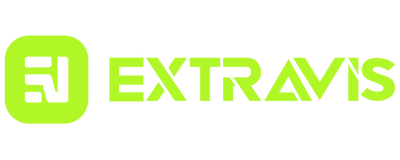For pet owners, a clean home is essential—but pet hair, dust, and dander can accumulate quickly. The Extravis V5 robot vacuum, equipped with LiDAR technology, ensures precise navigation around pet beds, litter boxes, and feeding stations while effectively removing pet-related messes. Its advanced mapping capabilities help target high-traffic areas where shedding is more common, ensuring a deeper, more efficient clean.
With LiDAR, the Extravis V5 doesn’t just clean—it cleans smarter. By combining intelligent navigation, real-time mapping, and efficient cleaning paths, it offers a truly hassle-free experience for busy households and pet lovers alike.
LiDAR (Light Detection and Ranging) technology is a game-changer for robot vacuums, making them smarter, faster, and more efficient. Unlike traditional vacuums that rely on bump sensors or cameras, LiDAR uses laser-based mapping to create a detailed, real-time 3D layout of your home. This improves navigation, obstacle detection, and cleaning precision, ensuring every inch of your space is covered with minimal effort. Here's a detailed breakdown of what LiDAR can do for a robot vacuum like the Extravis V5 and why it's essential for modern, pet-friendly homes.
Why LiDAR Matters for the Extravis V5?
🚀 1. Advanced Mapping & Navigation
LiDAR allows the robot vacuum to scan and create a highly detailed 3D map of your home in real time. Unlike random movement vacuums that bounce off walls and objects, a LiDAR-equipped vacuum knows exactly where it is at all times. This ensures more structured and methodical cleaning paths, avoiding unnecessary re-cleaning of the same spots or missing certain areas altogether. By using laser pulses to measure distances accurately, the vacuum can navigate through complex spaces, tight corners, and under furniture with ease.
🏠 2. Smart Room Recognition
With LiDAR-generated maps, the robot vacuum can identify and differentiate rooms in your home. This means you can customize your cleaning preferences by setting up schedules for specific areas. For example, you might want the kitchen vacuumed daily due to crumbs and spills but only clean the guest room once a week. Additionally, users can label different rooms in the mobile app, allowing for effortless control over which spaces need attention and which can be skipped.
🛑 3. Obstacle Detection & Avoidance
Traditional robot vacuums often rely on physical bump sensors, which require them to hit an obstacle before changing direction. LiDAR eliminates this by detecting objects before impact, allowing the vacuum to smoothly navigate around furniture, pet bowls, electrical cords, and even small toys left on the floor. This reduces wear and tear on both the vacuum and household items while preventing frustrating situations where the vacuum gets stuck in corners or under low-hanging furniture.
⏩ 4. Faster & More Efficient Cleaning
Since LiDAR enables the vacuum to understand its surroundings in real-time, it can optimize its cleaning path for maximum efficiency. Instead of moving in a chaotic, random pattern, a LiDAR-equipped vacuum follows an organized, grid-like path, covering every inch of the floor without unnecessary overlaps. This reduces cleaning time while ensuring thorough coverage, making the cleaning process much faster than traditional models. With a more efficient system, the vacuum also conserves battery life, allowing it to clean larger areas on a single charge.
🌙 5. Works in Low Light & Dark Rooms
Unlike camera-based navigation systems that struggle in low-light conditions, LiDAR does not require visible light to function. It relies on infrared laser pulses, which means the vacuum can operate flawlessly in complete darkness. Whether you prefer to schedule cleanings at night while you sleep or in rooms with minimal lighting (like basements or storage areas), LiDAR ensures the vacuum maintains full visibility of the space at all times.
📍 6. Virtual Barriers & No-Go Zones
With the help of LiDAR mapping, users can set up virtual boundaries directly through the mobile app. This means you can restrict the vacuum from entering certain areas without needing to place physical barriers. For example, you might want to keep the vacuum away from pet feeding stations, fragile furniture, or play areas with scattered toys. This feature is particularly useful for pet owners, as it prevents the vacuum from accidentally knocking over food bowls or disturbing a pet’s resting area.
🔋 7. Smart Recharge & Resume
One of the biggest advantages of LiDAR technology is its ability to track progress in real time. If the vacuum's battery runs low before finishing its cleaning cycle, it will automatically return to its charging dock, recharge to a sufficient level, and resume cleaning exactly where it left off. This prevents unnecessary re-cleaning of already cleaned areas, making it highly energy-efficient and ideal for larger homes. Instead of starting from scratch, the vacuum remembers the mapped-out space and continues its task seamlessly.
By integrating cutting-edge technology with user-friendly features like custom room cleaning, no-go zones, and auto-recharge, the Extravis V5 takes robotic cleaning to the next level. Whether you're dealing with pet hair, dust, or everyday messes, this vacuum is built to keep your home spotless with minimal effort on your part.
Investing in a LiDAR-powered robot vacuum like the Extravis V5 means more free time, a cleaner home, and a stress-free cleaning routine. Let technology do the work—so you can focus on what matters most!

